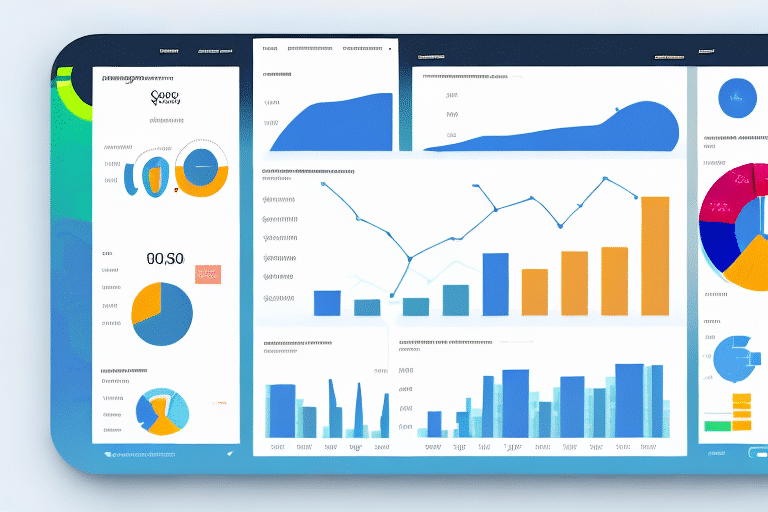Introduction to Average Cost to Serve (CTS) in E-Commerce
For e-commerce businesses, understanding the Average Cost to Serve (CTS) is pivotal for maintaining profitability and optimizing operations. CTS represents the total expenses incurred to fulfill an order, encompassing shipping, handling, production, and other related costs. According to a Statista report, global e-commerce sales have been steadily increasing, making efficient CTS management more critical than ever. By accurately measuring and analyzing your CTS, you can pinpoint areas for improvement, reduce operational costs, and enhance overall profitability. This article explores the significance of CTS, methods to calculate it, and strategies to improve it within your e-commerce operations.
Why Average Cost to Serve Matters for E-Commerce Success
Grasping your CTS is fundamental for making informed, data-driven decisions in e-commerce. Understanding the financial implications of each order allows businesses to:
- Optimize Pricing Strategies: Set prices that cover expenses and generate profit.
- Reduce Operational Costs: Identify and eliminate inefficiencies within the supply chain.
- Enhance Profit Margins: Increase profitability by lowering the cost associated with serving each customer.
Moreover, a clear understanding of CTS helps in recognizing which products or services are most profitable and which expenses significantly impact overall costs. This facilitates targeted improvements, such as enhancing product quality or customer service to boost customer satisfaction and loyalty.
Understanding and Defining Average Cost to Serve
Average Cost to Serve encompasses all expenses from the point an order is placed until it is delivered to the customer. Key components include:
- The cost of goods sold (COGS)
- Production and labor costs
- Shipping and handling expenses
- Packaging costs
- Returns and allowances
- Marketing and advertising expenses
- Logistics and transportation costs
- Customer service and support
Understanding each cost category is crucial for managing cash flow, identifying cost-saving opportunities, and optimizing operations. Accurate CTS calculation informs pricing strategies, ensuring that prices not only cover all expenses but also yield a profit, particularly vital in competitive markets.
Impact of Returns and Exchanges on CTS
Returns and exchanges introduce additional costs such as restocking fees, shipping expenses, and potential product damage. According to a study by Invesp, the average return rate for e-commerce is around 30%, making it essential to factor these into your CTS. Factoring these into your CTS allows for more informed decisions regarding return policies and can help in reducing overall service costs.
Components of the Average Cost to Serve Equation
The CTS equation includes several critical components:
- The cost of goods sold
- The cost of production and labor
- The cost of shipping and handling
- The cost of returns and allowances
- The cost of marketing and advertising
- The cost of logistics and transportation
- The cost of customer service and support
- The cost of technology and software
Customization Costs: Tailoring products or services for individual customers can significantly elevate production and labor expenses, as well as customer service costs.
Technology Investments: Investing in technology like inventory management systems, CRM software, and e-commerce platforms is essential for staying competitive and meeting customer needs efficiently.
Optimizing Shipping and Handling Costs
Shipping and handling are substantial contributors to CTS and can heavily influence profitability. High shipping fees may deter customers, leading to decreased sales and dissatisfaction. To optimize these costs:
- Negotiate Carrier Rates: Secure better rates with shipping carriers to lower expenses.
- Optimize Packaging: Use appropriately sized packaging to reduce material costs and shipping weights.
- Reduce Delivery Times: Streamline logistics to enhance customer satisfaction without inflating costs.
Additionally, optimizing shipping practices can contribute to environmental sustainability by reducing packaging waste and lowering the carbon footprint, appealing to environmentally conscious consumers. For more on sustainable packaging, refer to this GreenBiz article.
How to Calculate Your Average Cost to Serve
Calculating CTS involves a straightforward process:
- Identify all expenses related to fulfilling an order, including COGS, shipping, handling, packaging, returns, marketing, logistics, customer service, and technology costs.
- Sum all these expenses.
- Divide the total expenses by the total number of orders to determine the average CTS per order.
The following formula illustrates this calculation:
CTS = Total Expenses / Total Number of Orders
Regularly reviewing and analyzing CTS data helps in identifying cost-saving opportunities and improving operational efficiencies, thereby enhancing profitability. For detailed methodologies on cost analysis, refer to resources like the Harvard Business Review.
Benefits of Understanding Average Cost to Serve
Knowing your CTS provides numerous advantages, including:
- Identifying areas for cost savings and improving profitability
- Optimizing pricing strategies and increasing margins
- Enhancing cash flow management
- Recognizing top-performing products or services and refining production processes
- Boosting customer satisfaction by streamlining shipping processes and reducing delivery times
- Making informed decisions about product offerings and return policies
Furthermore, tracking CTS assists in evaluating the business’s overall financial health, supporting strategic decisions related to investments, expansion, and long-term sustainability.
Strategies to Improve Profitability by Reducing CTS
Reducing CTS can directly increase profitability. Here are effective strategies:
- Streamline the Supply Chain: Collaborate with suppliers to optimize procurement and inventory management, reducing storage and procurement costs.
- Enhance Inventory Management: Utilize advanced inventory systems to minimize holding costs and prevent stockouts that lead to lost sales.
- Leverage Technology: Implement automation and analytics tools to increase operational efficiency and reduce labor costs.
- Improve Customer Retention: Focus on excellent customer service and loyalty programs to reduce the cost of acquiring new customers.
- Optimize Packaging: Use cost-effective and sustainable packaging solutions to lower material and shipping costs.
Streamlining the Supply Chain
Efficient supply chain management involves close collaboration with suppliers, optimizing inventory levels, and improving logistics to reduce costs and enhance delivery performance. Resources like McKinsey Operations Insights offer valuable strategies for supply chain optimization.
Focusing on Customer Retention
Retaining existing customers through superior service and engagement reduces the high costs associated with acquiring new customers, ultimately lowering your CTS. For techniques on enhancing customer loyalty, see the CustomerThink platform.
Case Studies: Effective Use of CTS Data in Decision-Making
Numerous companies have leveraged CTS data to enhance their operations and profitability:
- An e-commerce retailer optimized packaging sizes and negotiated carrier rates, resulting in a 20% reduction in shipping costs.
- A company implemented a shipping cost optimization tool, cutting shipping expenses by 30%.
- A manufacturing firm analyzed transportation costs, negotiating better rates and optimizing shipping routes to achieve a 15% reduction in transportation expenses. Additionally, they streamlined production processes, reducing labor costs by 10%.
These examples underscore the tangible benefits of understanding and acting upon CTS data.
Overcoming Common Challenges in Measuring Average Cost to Serve
Measuring CTS can present several challenges. Here’s how to address them:
- Inaccurate Data: Ensure meticulous recording of all expenses related to order fulfillment.
- Identifying Relevant Metrics: Focus on key metrics that directly impact your CTS and overall profitability.
- Data Silos: Integrate data across departments to provide a comprehensive view of costs and avoid information gaps.
Implementing robust data management practices and utilizing integrated analytics tools can mitigate these challenges.
Leveraging Analytics Tools to Track and Manage CTS
Analytics tools are invaluable for accurately measuring and tracking CTS over time. These tools offer features such as:
- Data consolidation from various departments
- Real-time insights and reporting
- Trend analysis and anomaly detection
- Performance benchmarking
By leveraging these capabilities, businesses can continuously monitor their CTS, identify emerging cost trends, and implement timely adjustments to maintain or improve profitability. Popular analytics platforms include Tableau, Microsoft Power BI, and SAS Analytics.
Best Practices for Reducing Average Cost to Serve
Adopting the following best practices can help in effectively reducing your CTS:
- Negotiate Carrier Rates: Secure better shipping rates by negotiating with carriers or leveraging bulk shipping discounts.
- Optimize Packaging: Use efficient packaging to minimize material usage and reduce shipping costs.
- Improve Inventory Management: Implement just-in-time inventory systems to lower holding costs and reduce waste.
- Offer Free Shipping Promotions: Attract customers and increase sales volume, potentially offsetting shipping costs through higher order quantities.
Key Metrics to Track for a Comprehensive Understanding of CTS
Monitoring specific metrics can provide deeper insights into your CTS:
- Shipping and handling costs per order
- Cost of production and labor per unit
- Average value of an order
- Percentage of returns
- Cost of customer service per order
Tracking these metrics helps in identifying cost drivers and opportunities for optimization.
Conclusion: The Critical Role of Regular CTS Measurement in E-Commerce
Regularly measuring and analyzing your Average Cost to Serve is essential for e-commerce businesses aiming to optimize operations and boost profitability. By accurately tracking CTS, you can identify cost-saving opportunities, refine pricing strategies, and enhance customer satisfaction through efficient shipping processes. Continual assessment of CTS ensures that your business remains competitive, financially healthy, and positioned for sustainable growth.






















